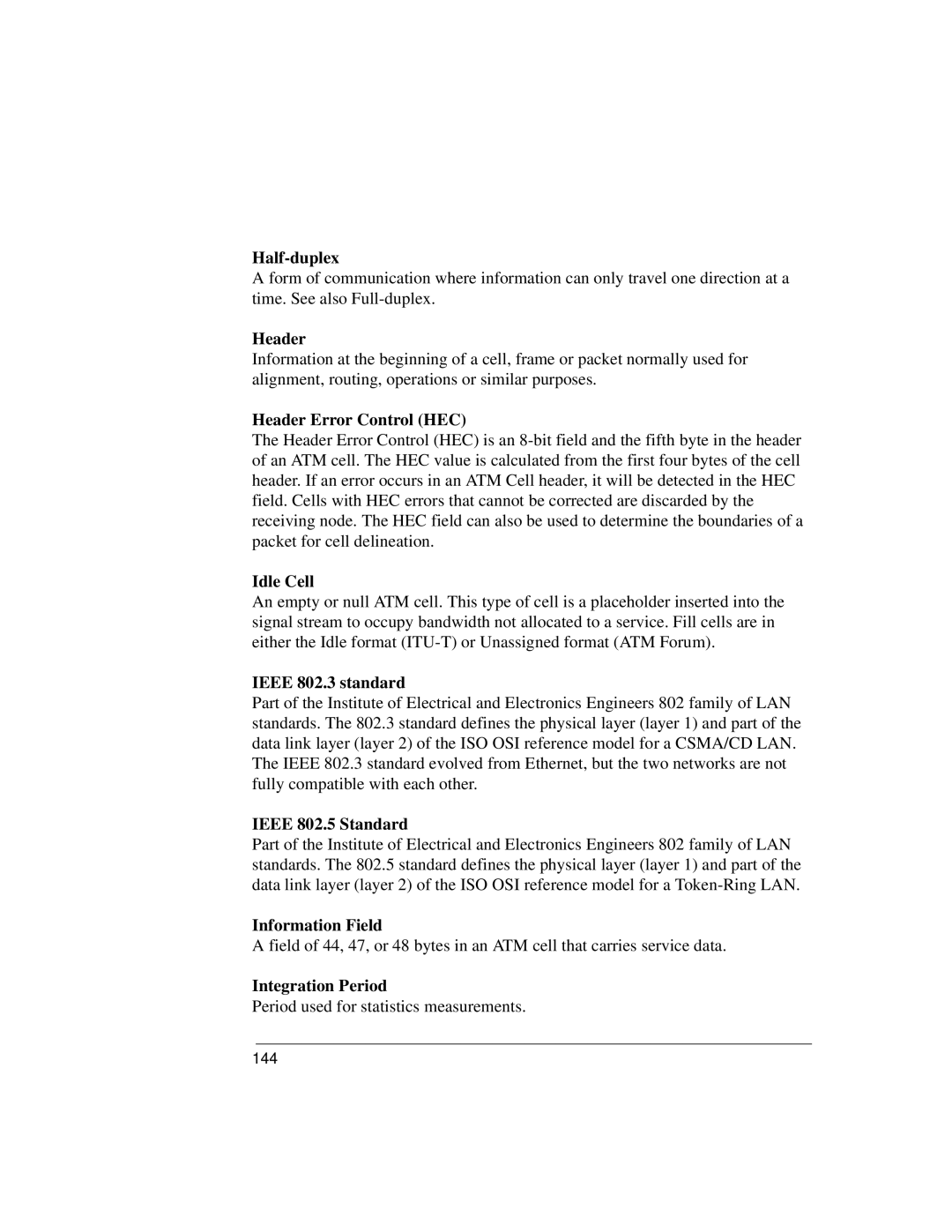Half-duplex
A form of communication where information can only travel one direction at a time. See also
Header
Information at the beginning of a cell, frame or packet normally used for alignment, routing, operations or similar purposes.
Header Error Control (HEC)
The Header Error Control (HEC) is an
Idle Cell
An empty or null ATM cell. This type of cell is a placeholder inserted into the signal stream to occupy bandwidth not allocated to a service. Fill cells are in either the Idle format
IEEE 802.3 standard
Part of the Institute of Electrical and Electronics Engineers 802 family of LAN standards. The 802.3 standard defines the physical layer (layer 1) and part of the data link layer (layer 2) of the ISO OSI reference model for a CSMA/CD LAN. The IEEE 802.3 standard evolved from Ethernet, but the two networks are not fully compatible with each other.
IEEE 802.5 Standard
Part of the Institute of Electrical and Electronics Engineers 802 family of LAN standards. The 802.5 standard defines the physical layer (layer 1) and part of the data link layer (layer 2) of the ISO OSI reference model for a
Information Field
A field of 44, 47, or 48 bytes in an ATM cell that carries service data.
Integration Period
Period used for statistics measurements.
144
